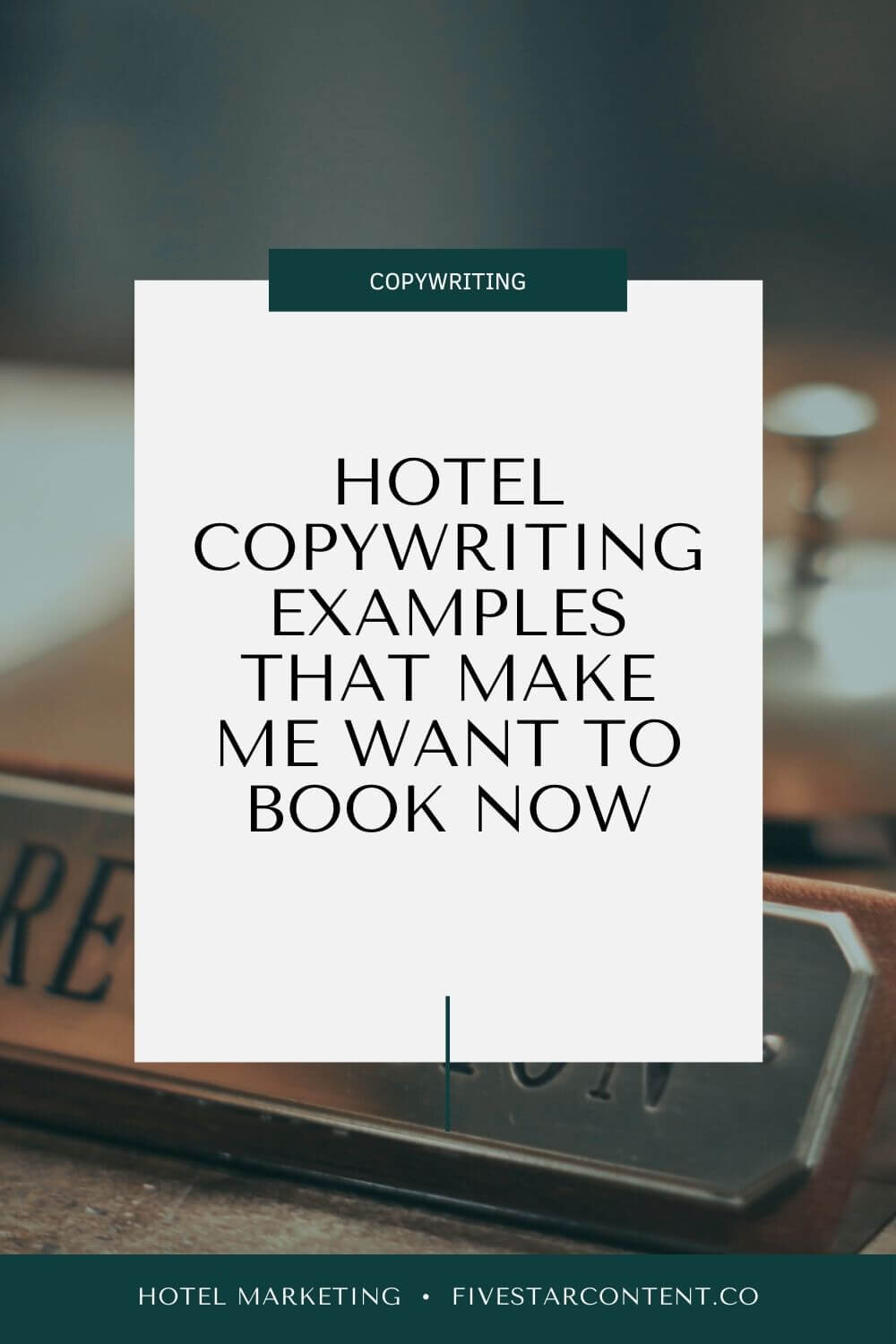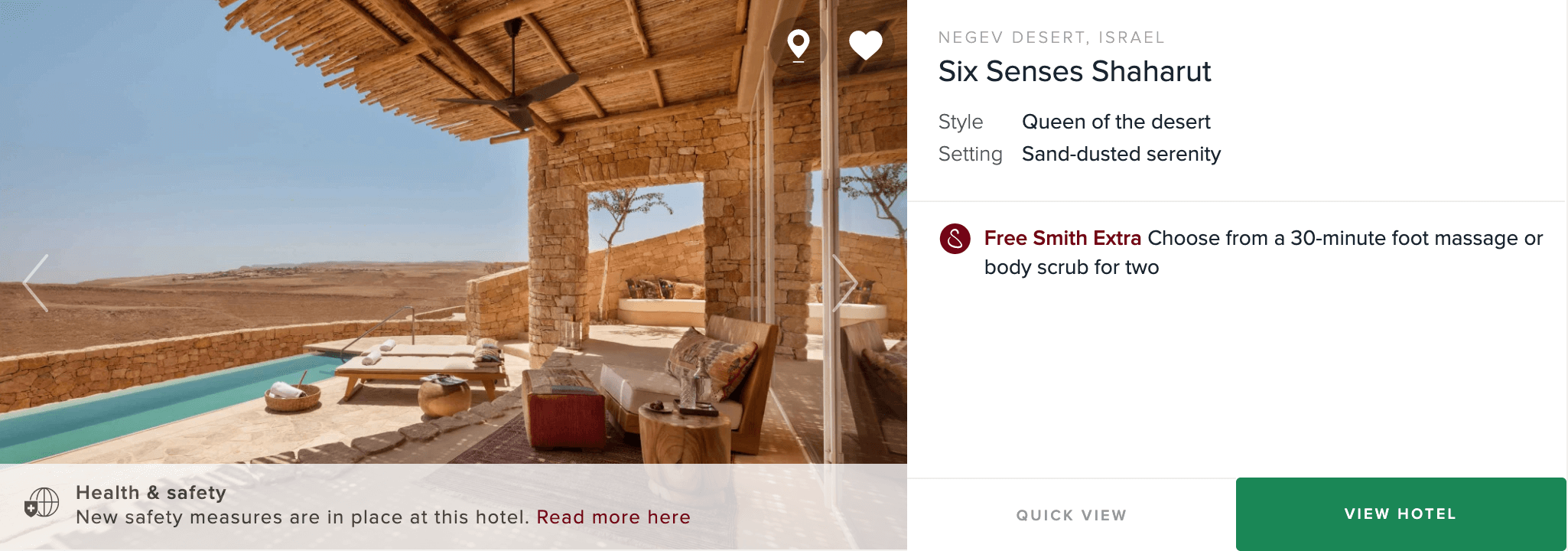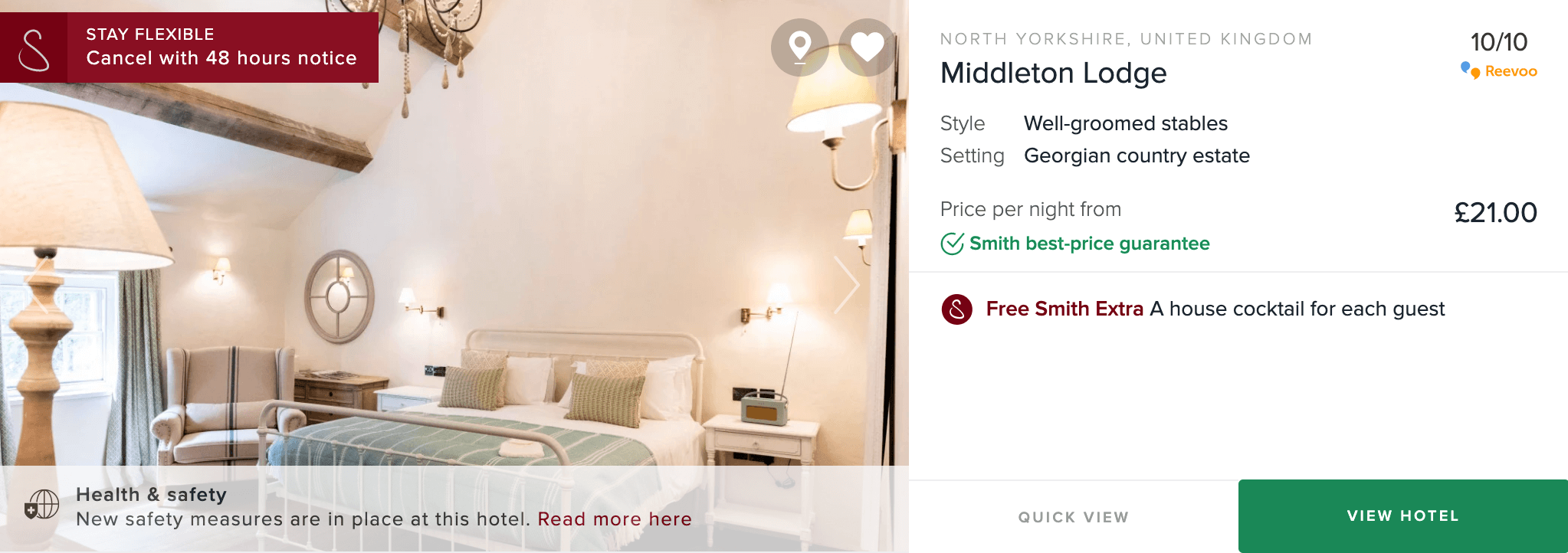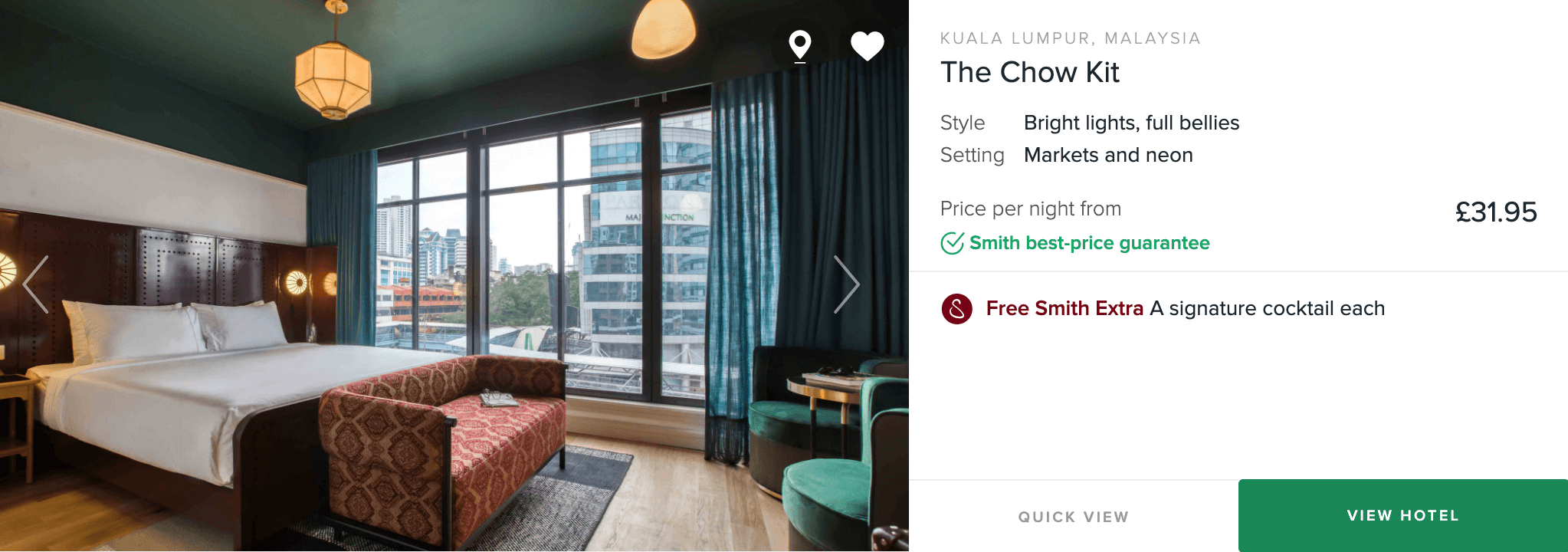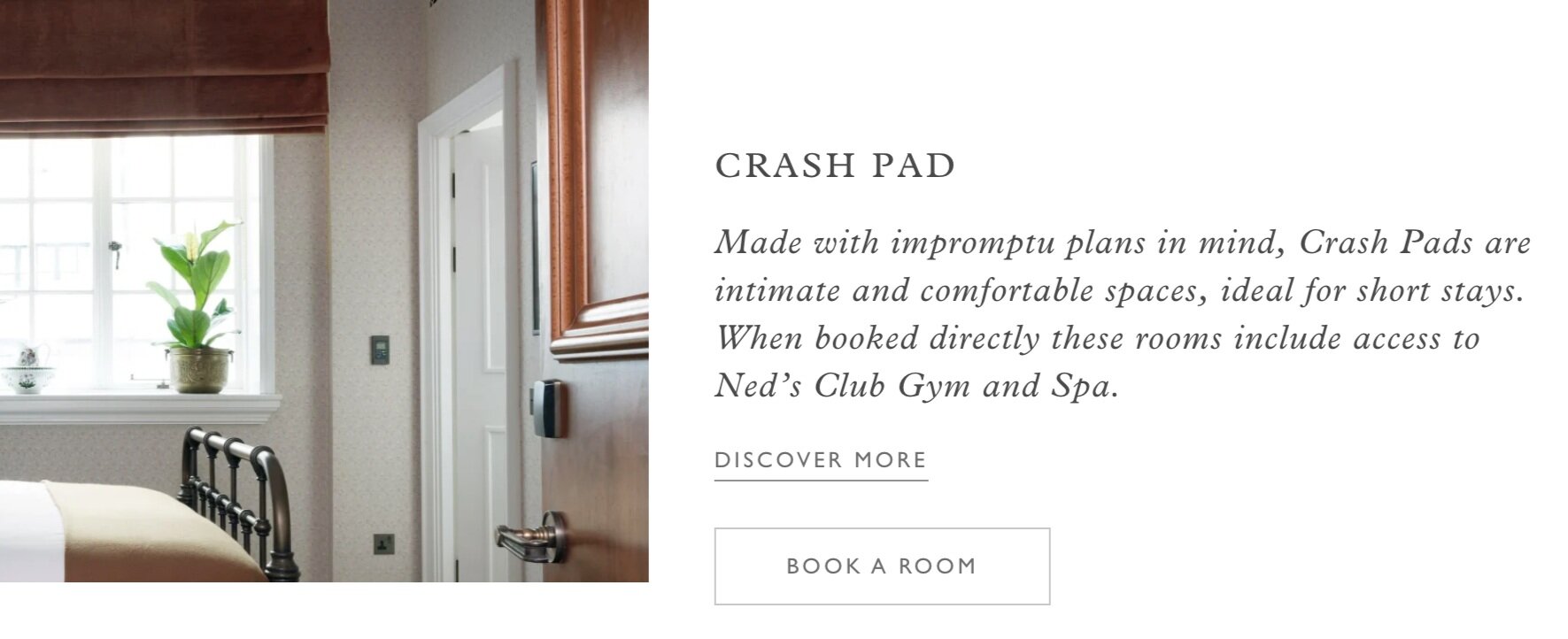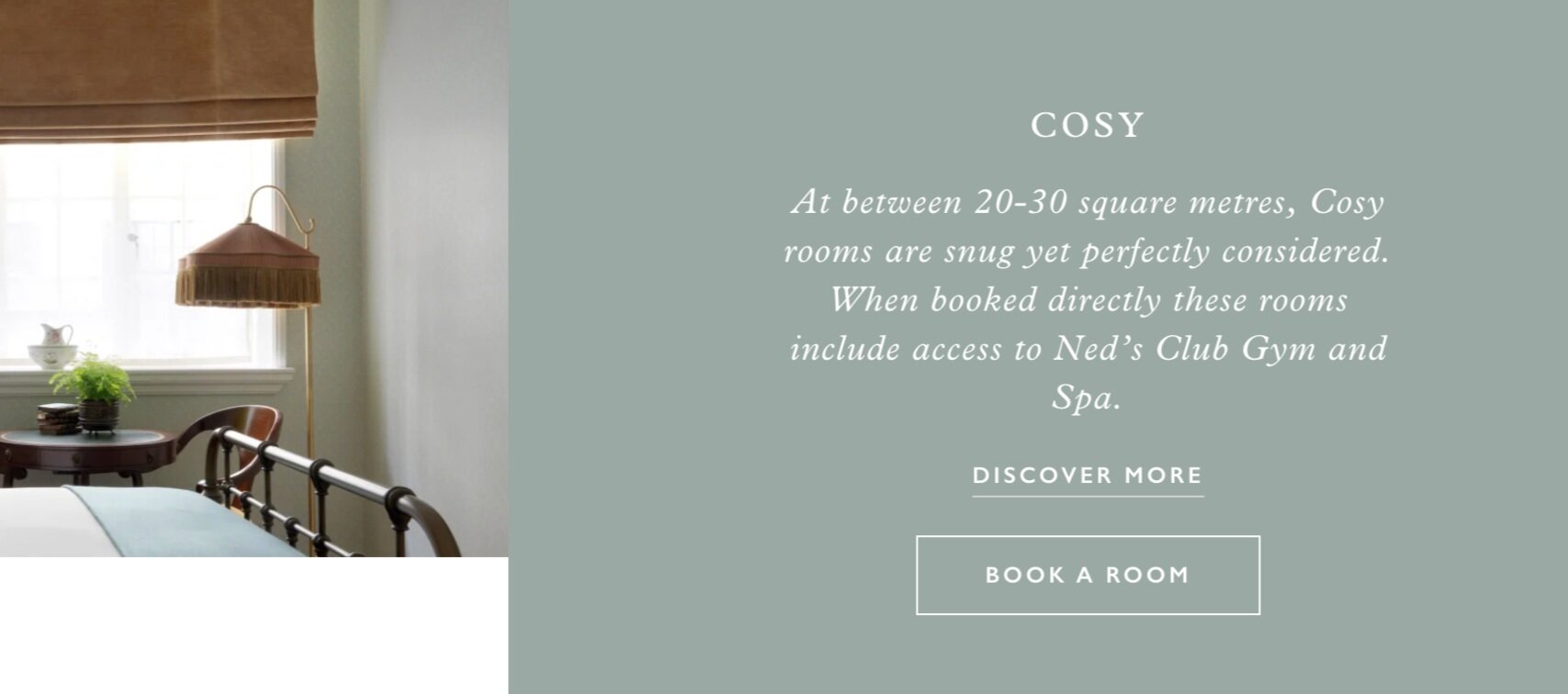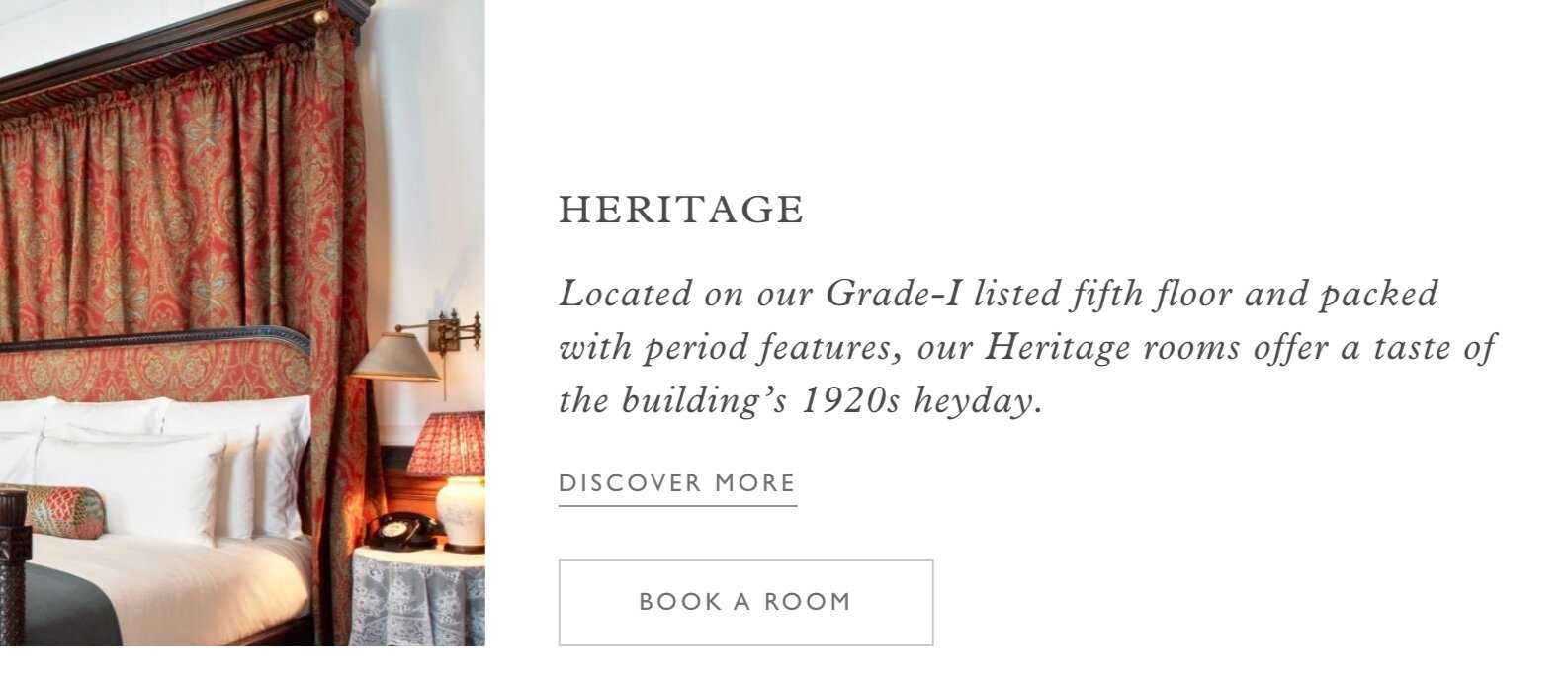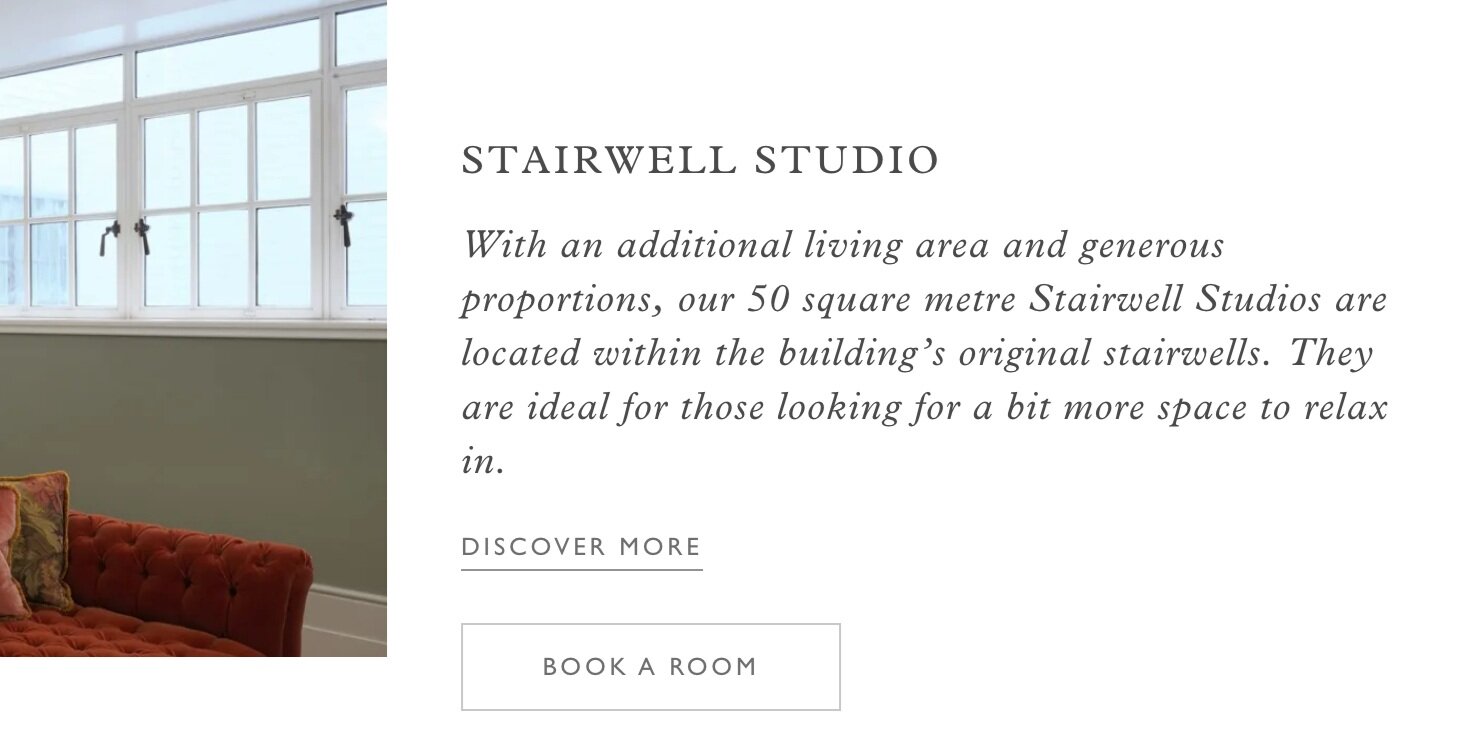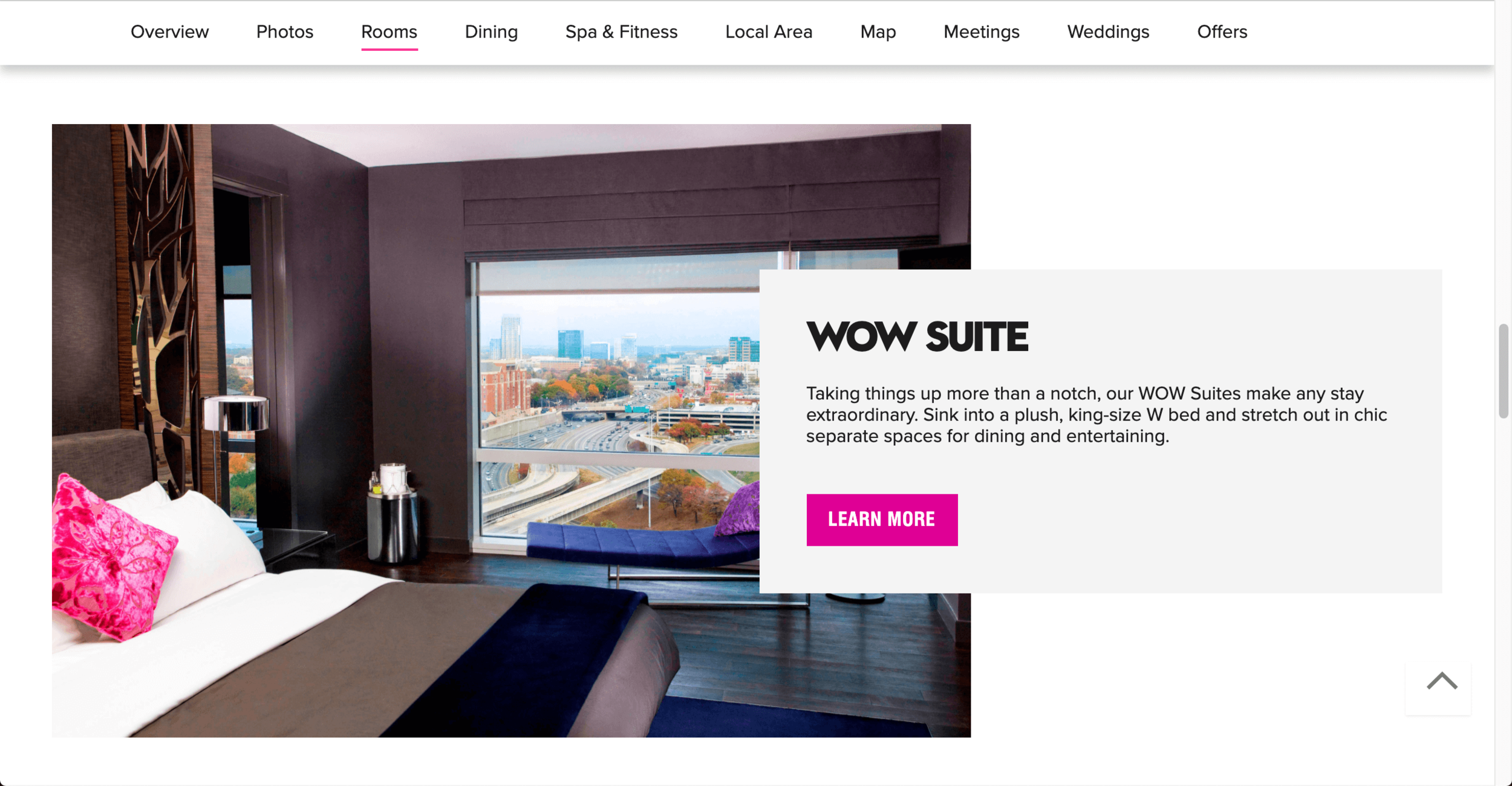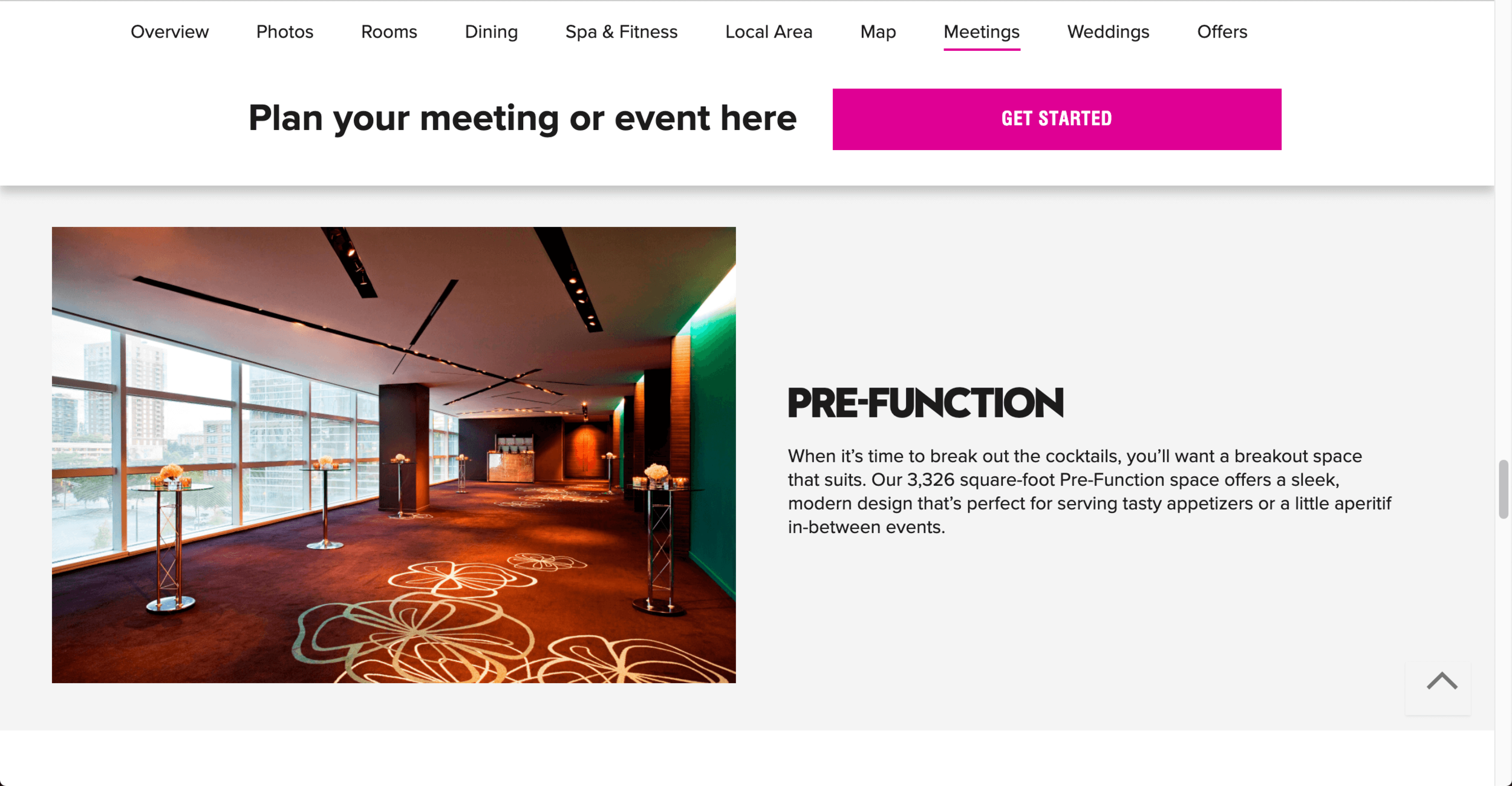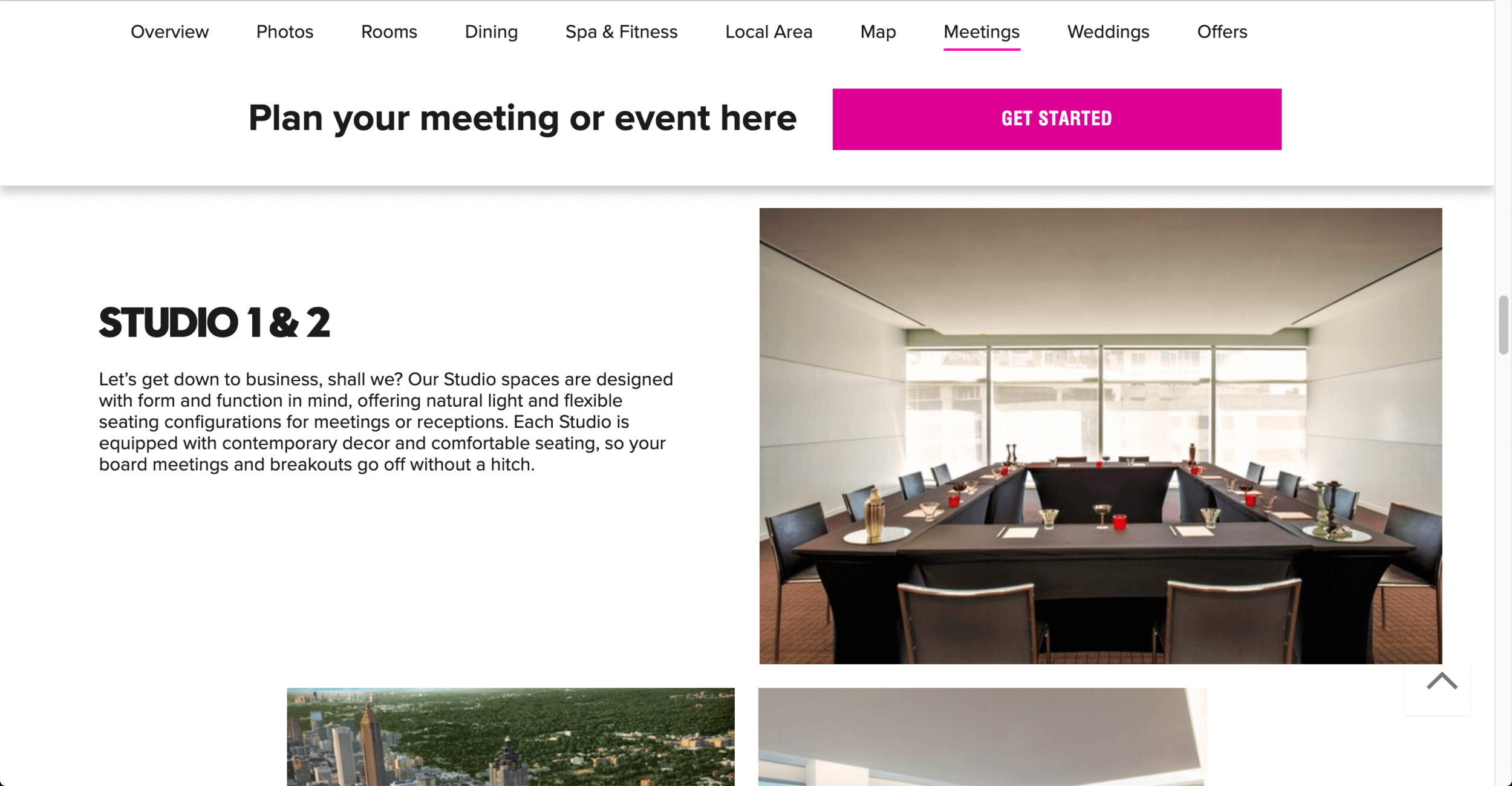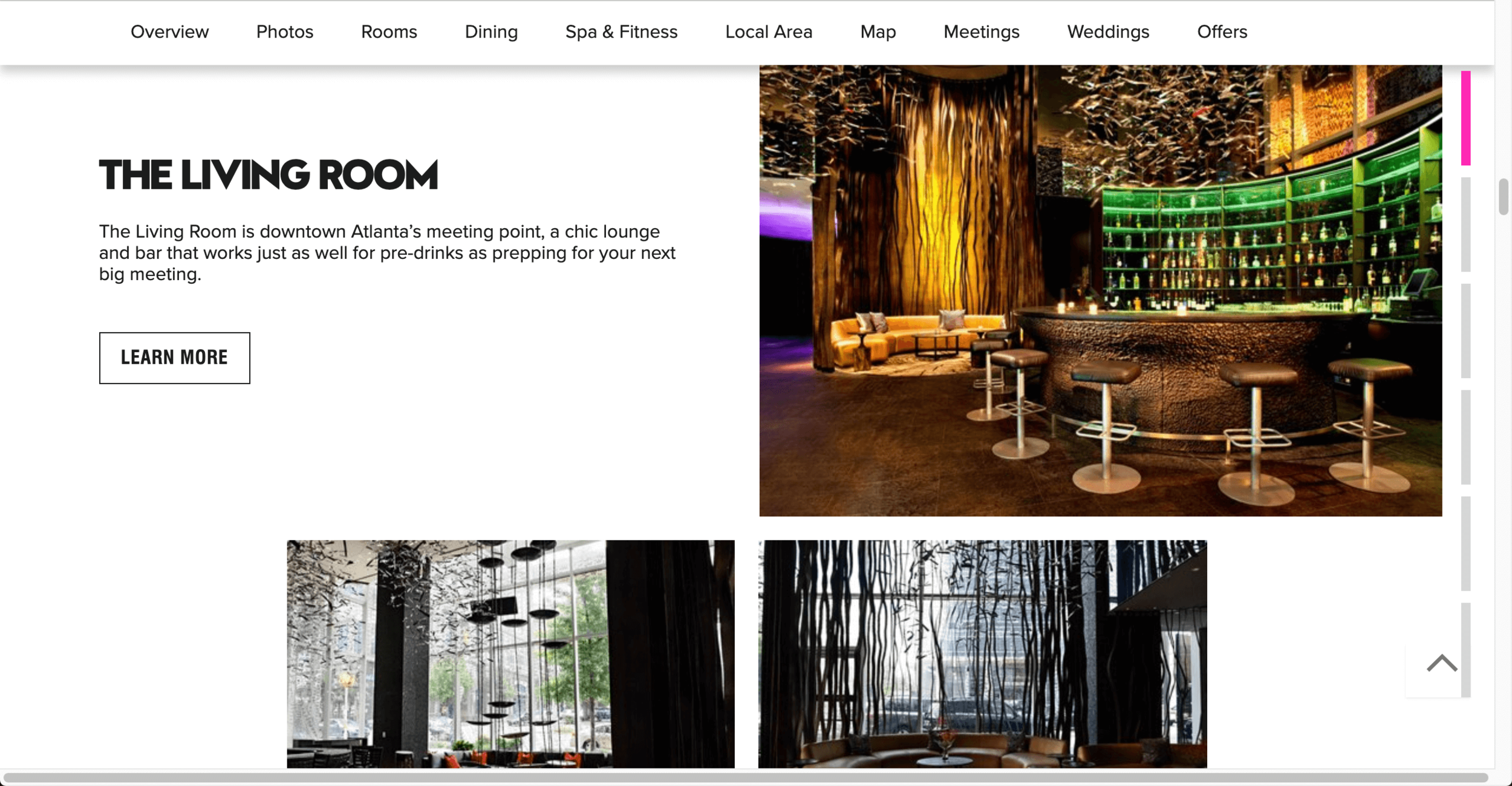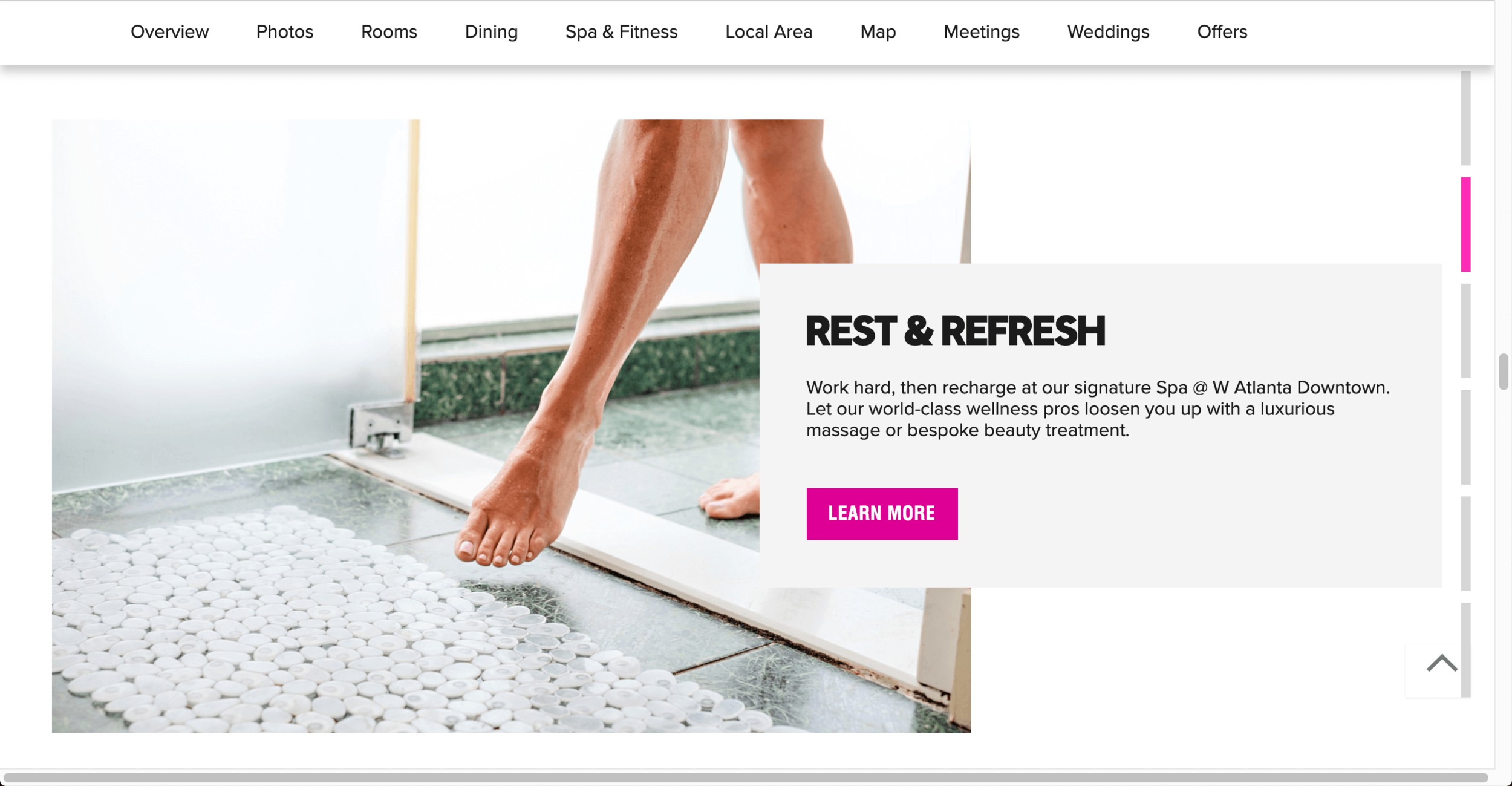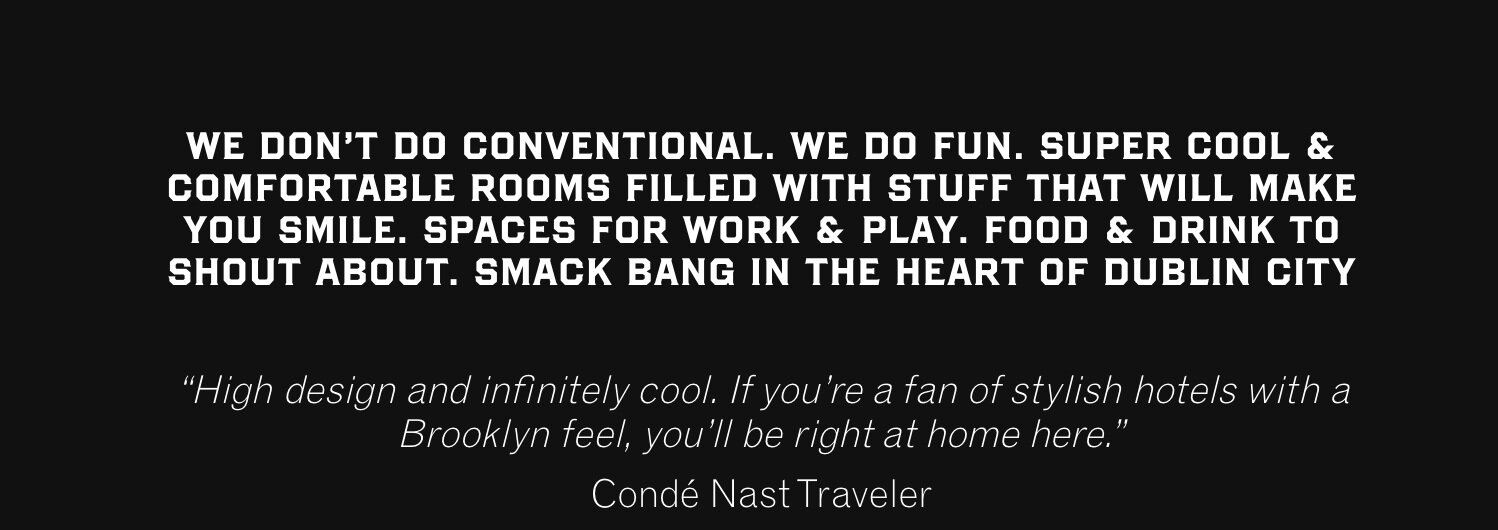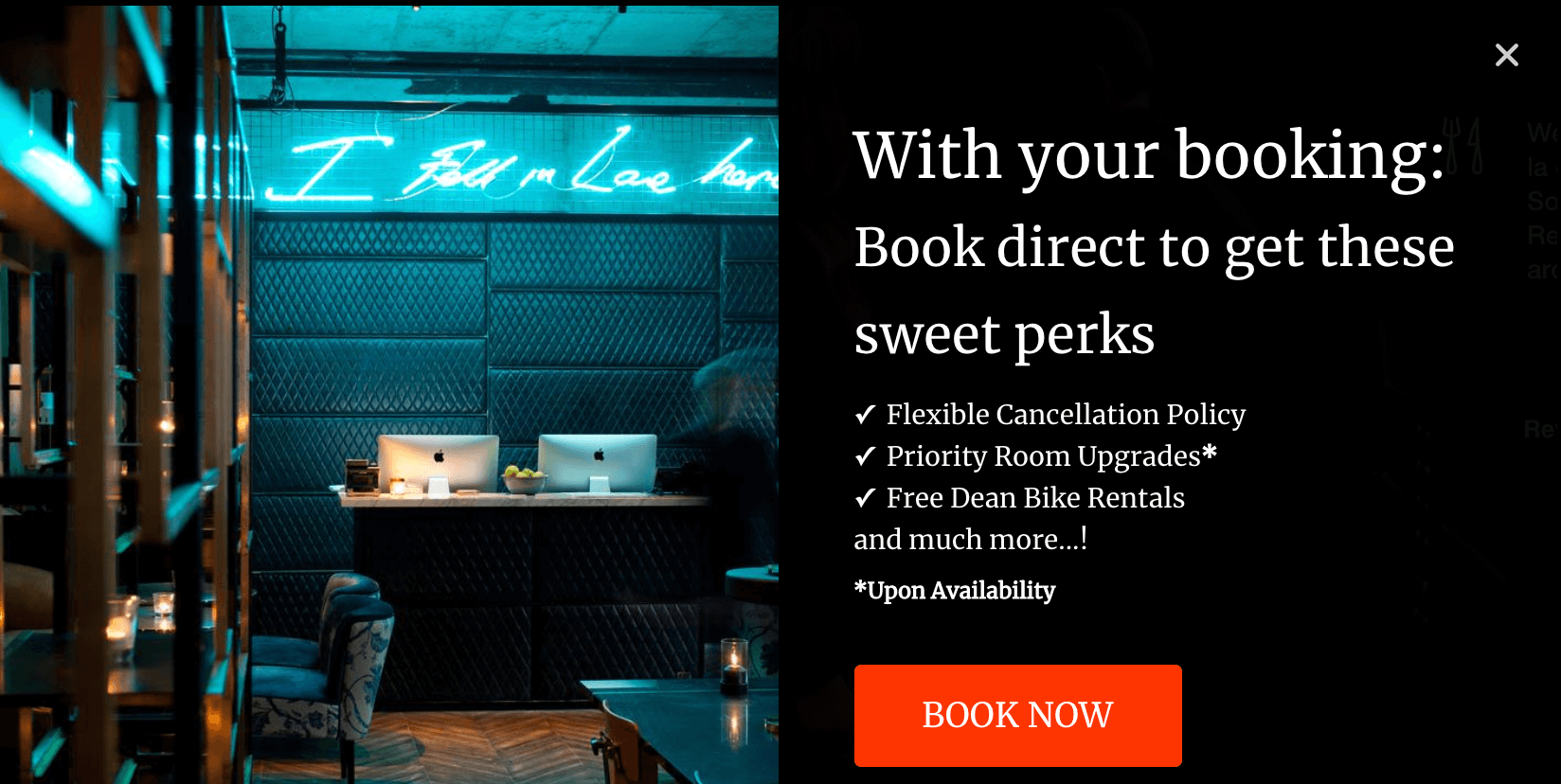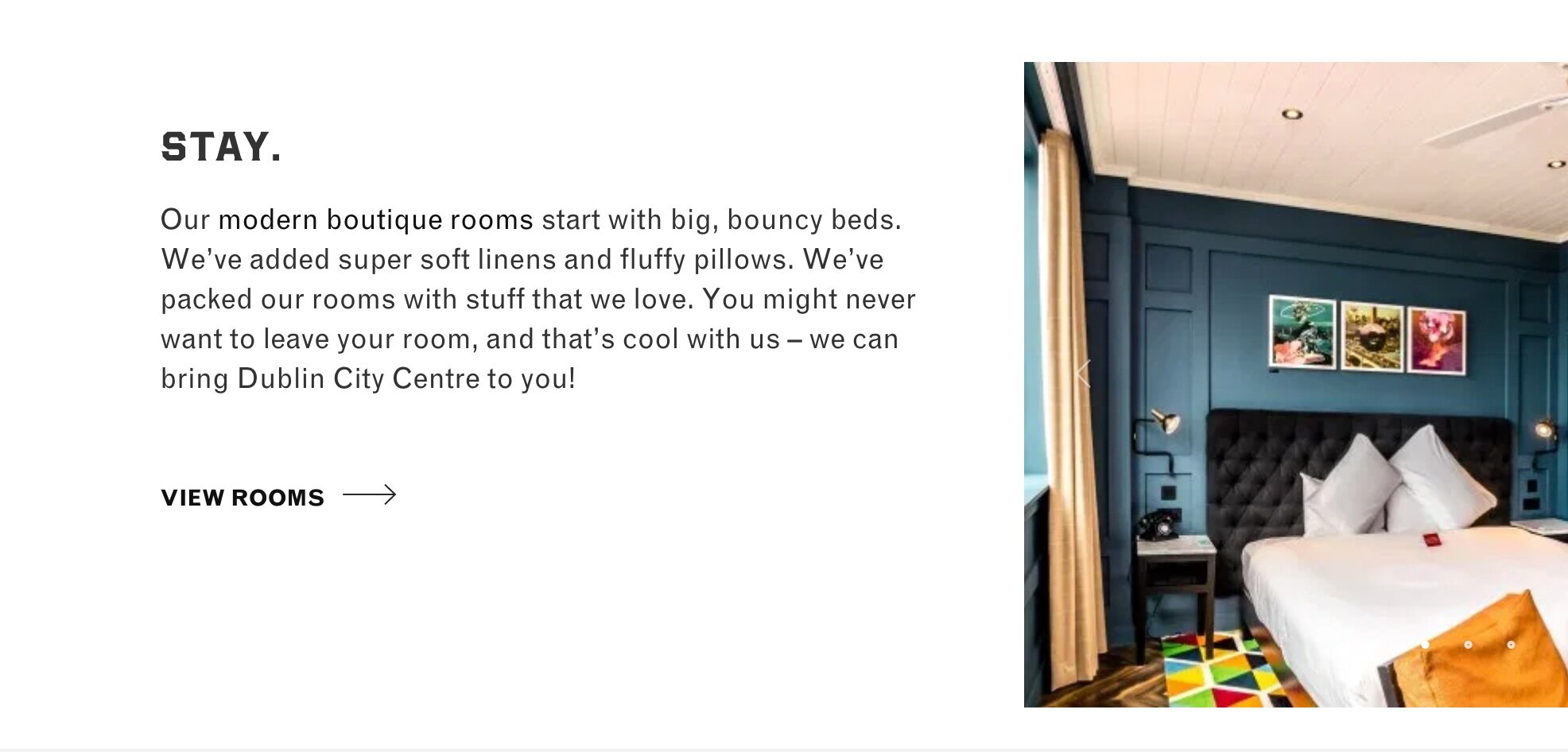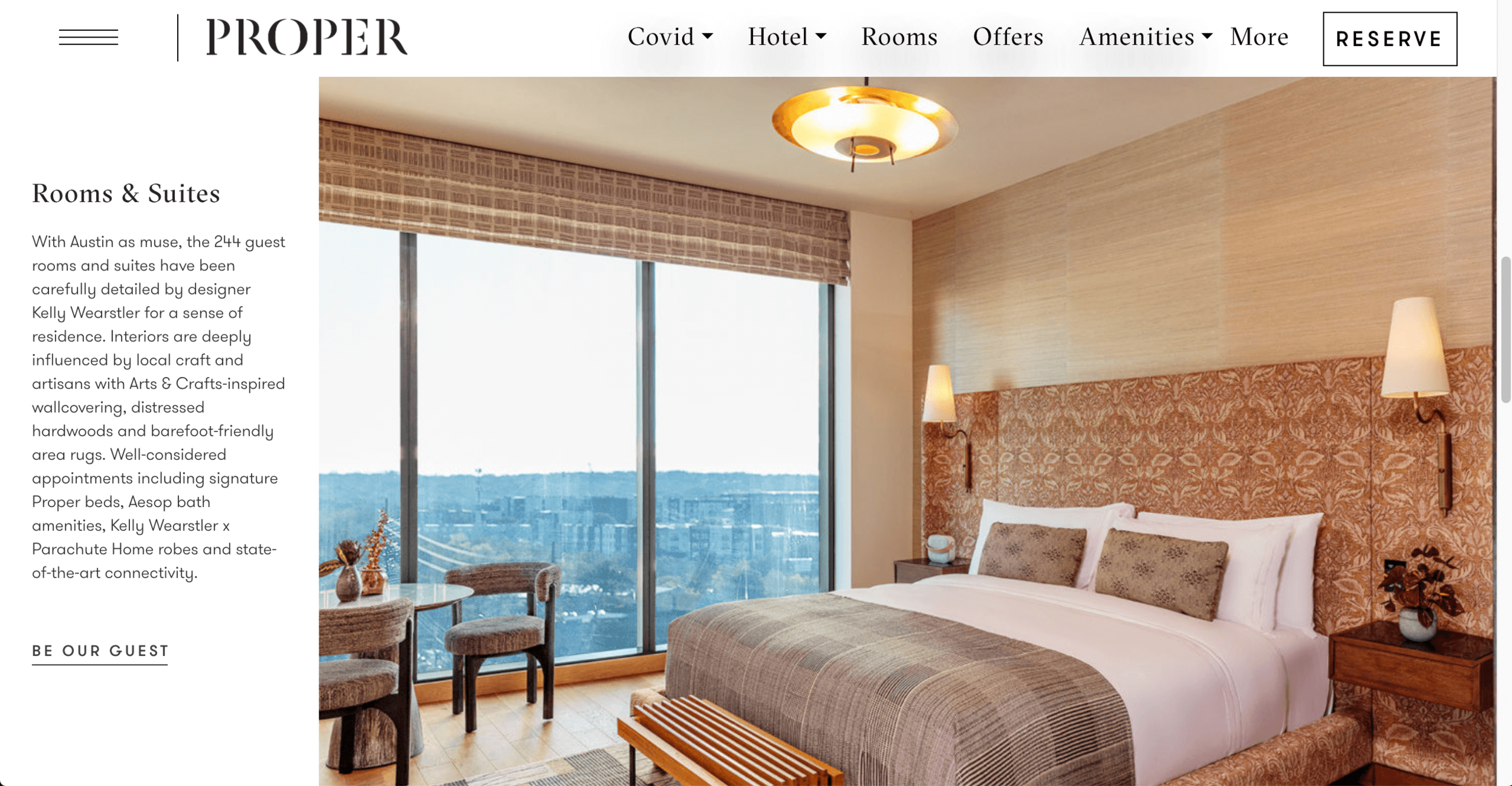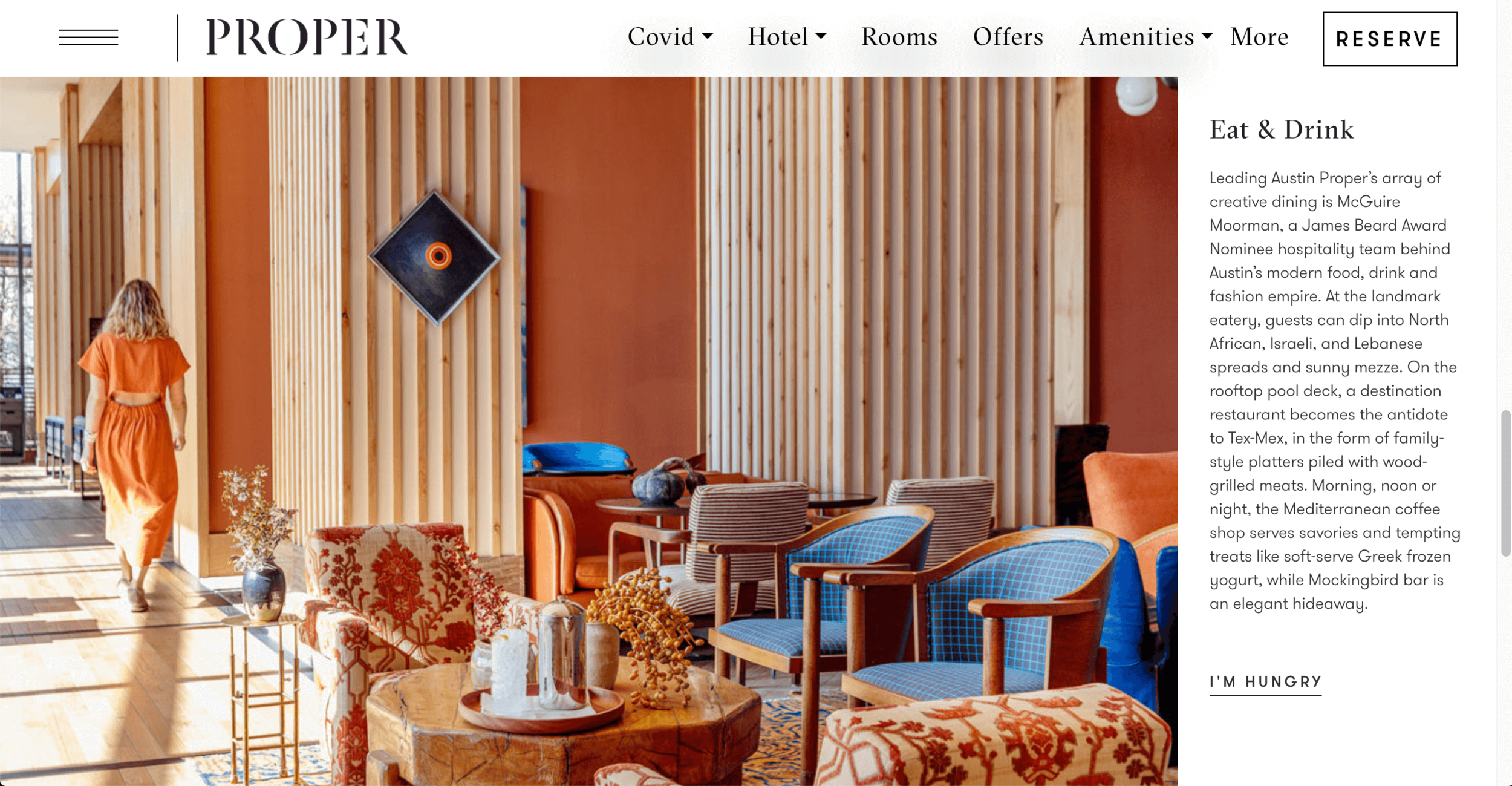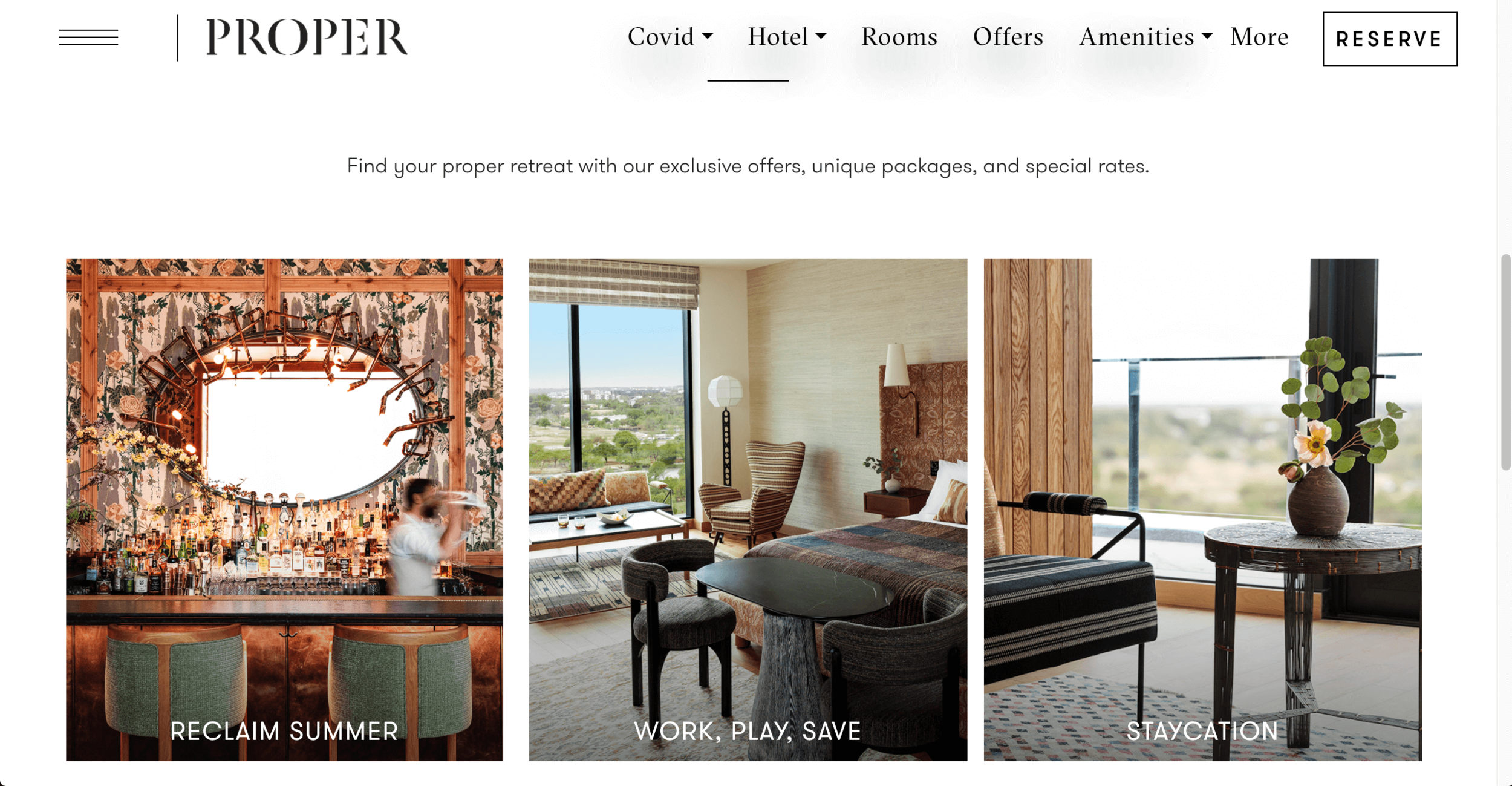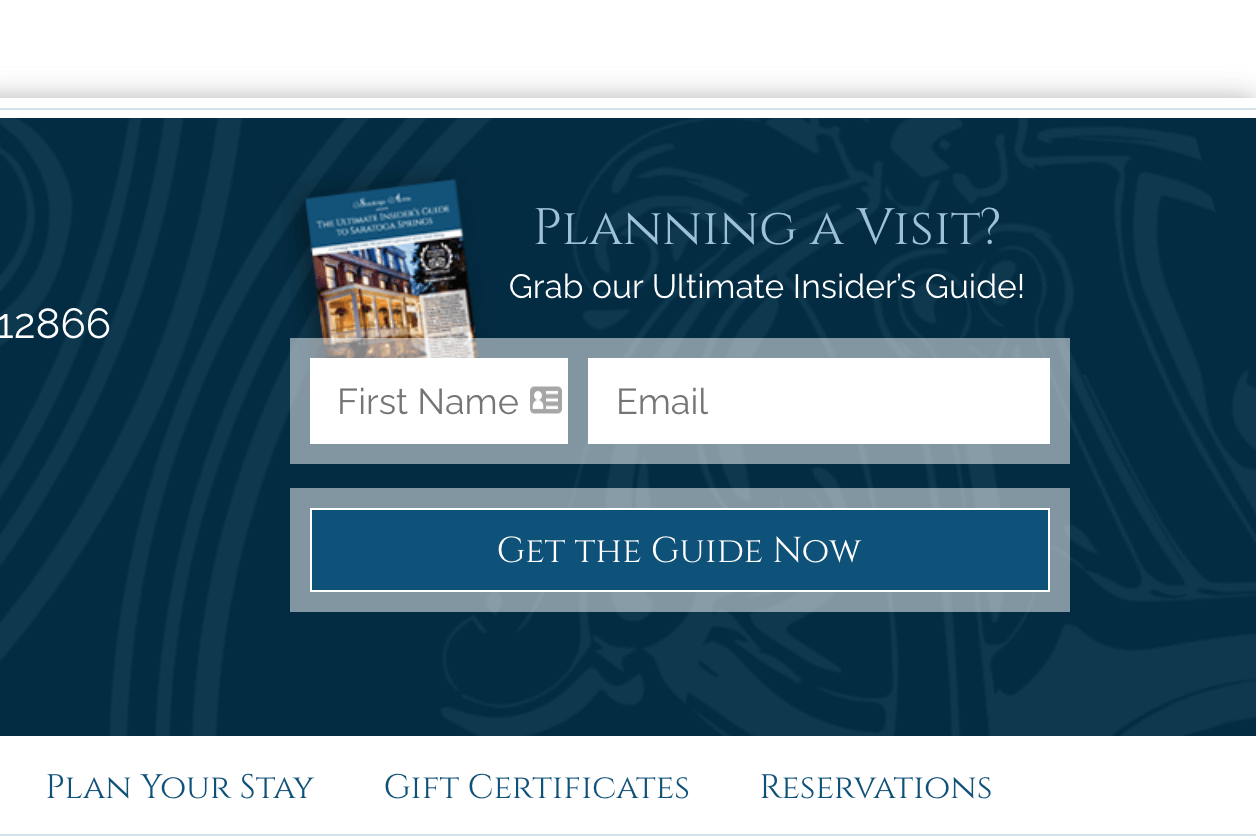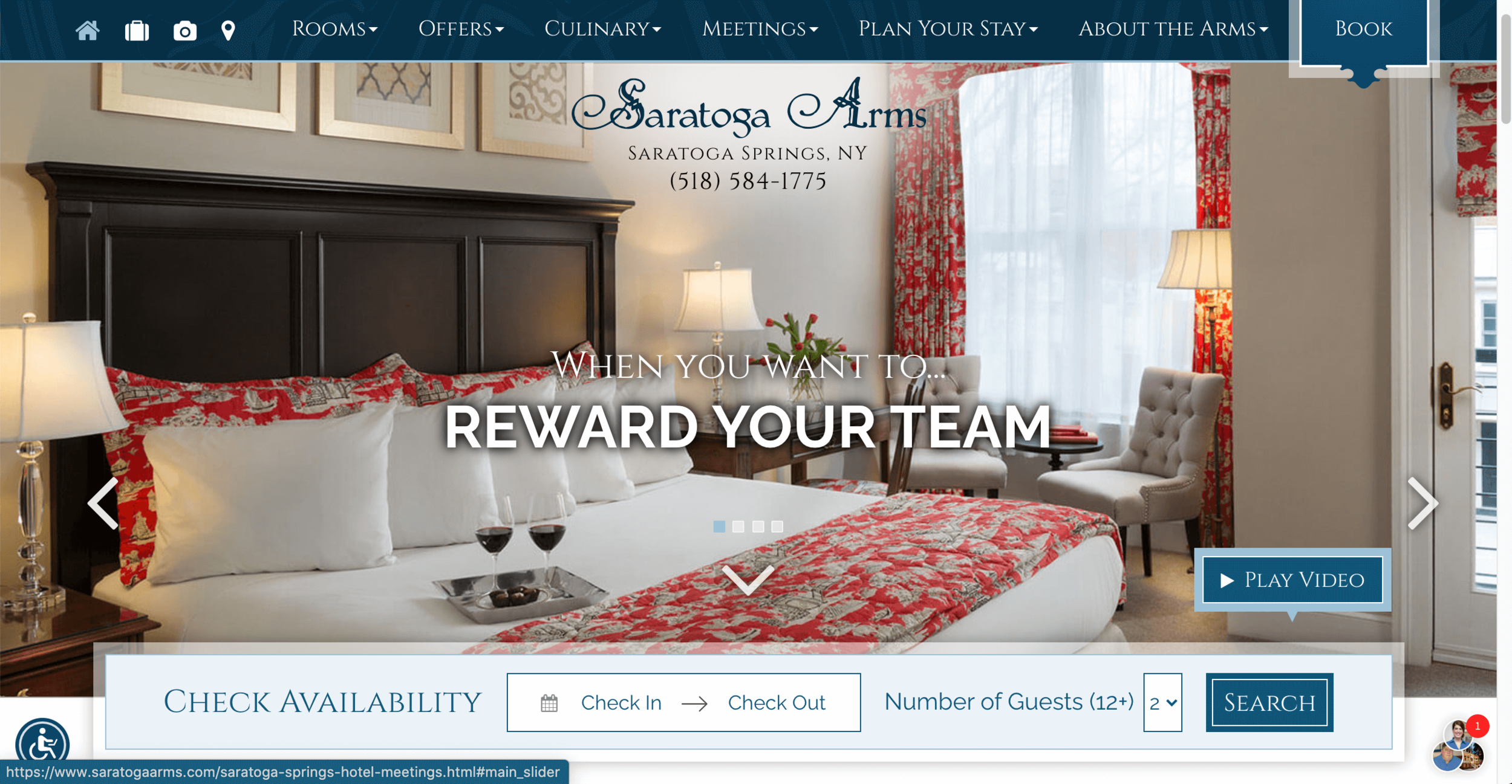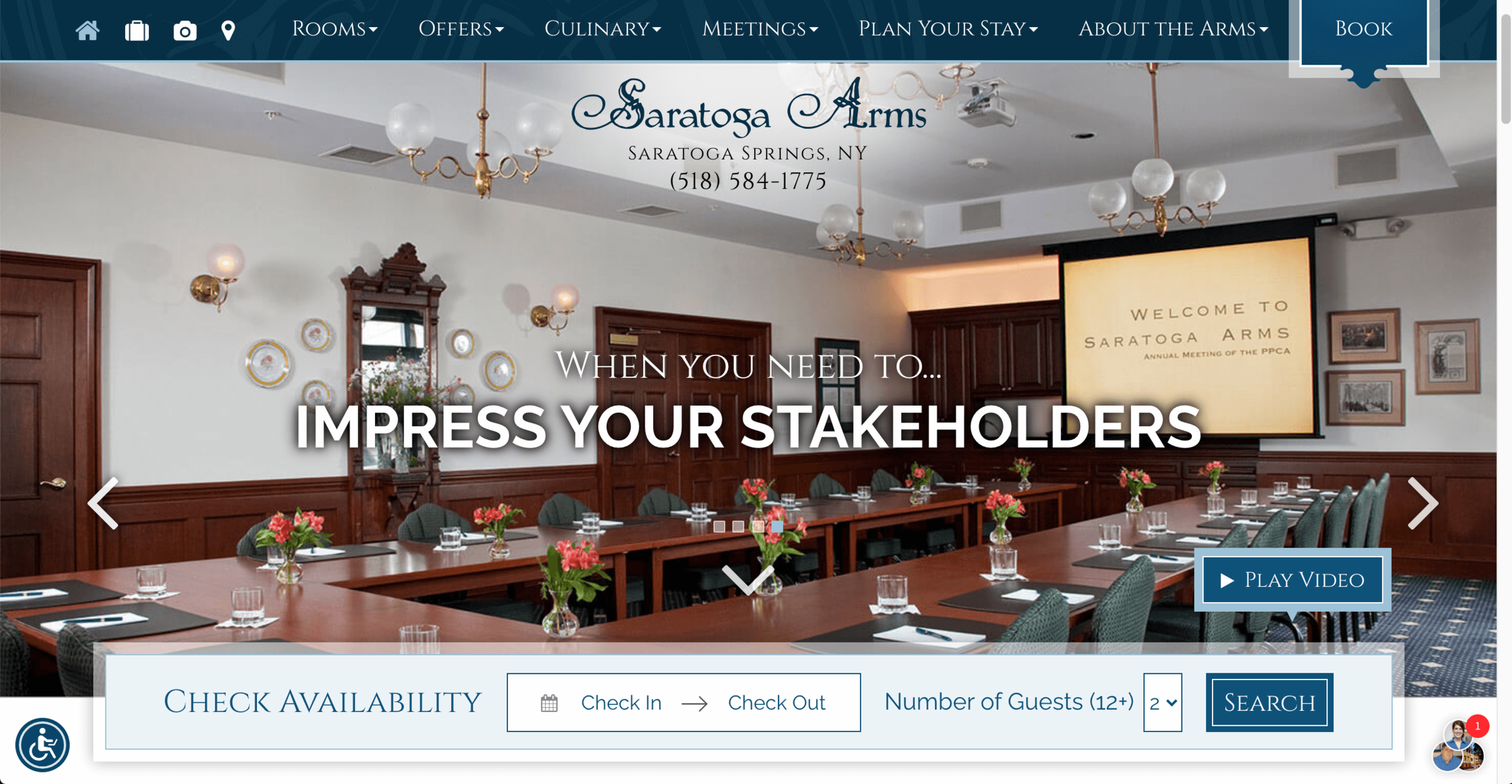Hotel Copywriting Examples That Make Me Want To Book Now
Your website is the face of your hotel business. You already invest a lot of budget into photography, but that doesn’t mean your words are an afterthought. Here are a few examples of hospitality and travel copywriting that really get it right!
Think about your own experiences as a consumer. How often do you make a quick assumption about a brand or business, after merely a quick glance at their website? When was the last time a brand really "spoke" to you?
Now, think like a business owner: You have a five-star experience to offer, don't you? Why isn't your website copy as captivating, original, and enticing as your hotel?
Thing is, there are a few specific elements that really add up to strong hospitality copywriting.
I’m about to share a few tourism and travel copywriting examples that make ME want to bust out my credit card and book a room — like, right now!
If you’re writing your own website, the tips in this article will definitely help. If you’d rather hire an expert, feel free to explore my hotel and travel copywriting services. Now, let’s get to the examples!
After 10+ years in the industry, I’ve seen my fair share of the same hotel copywriting mistakes over and over — spelling errors, weak calls-to-action, cheesy buzzwords, ugh.
Watch the quick video below to avoid making these revenue-killing mistakes on your own hotel website! ⤵
OK, now that we’ve gotten “what not to do” out of the way, let’s continue on with some of the best examples of hotel and hospitality copywriting — including what makes them so great!
Travel copywriting must be captivating & descriptive
There’s a reason people love (and overuse) the word, “wanderlust.” The very meaning of it, “a strong desire to travel” evokes a specific feeling we can all relate to. It’s a powerful word.
If you’re a marketer in the travel industry you know that half the battle is getting eyeballs on YOUR website, rather than a wholesaler or OTA.
The thing about travel SEO copywriting is that you need to be consistently creating quality content AND targeting the right keywords. Otherwise, you’re missing out on a giant pool of potential guests who turn to search engines and social media to find answers and inspiration.
Good travel content writing captures the imaginations of future travelers — often, long before they even realize they need a trip.
Pro Tip: Make sure you’re working with travel copywriters who truly understands how SEO and content marketing align. These functions have to work together — one without the other is essentially useless.
1. Mr and Ms Smith
While not a specific property, Mr and Mrs Smith is a travel business that really nails their copywriting.
Travelers often try to visualize themselves on vacation long before they arrive. We try to imagine what these new surroundings will look like, what they’ll smell like ,and how we’ll feel once we’re there.
Mr. and Mrs. Smith also has the unique challenge of volume — there are literally thousands of luxury hotels on their website, so there’s simply no room to waste on long-winded, overly-flowery descriptions.
How do you accurately describe a hotel using a single line of copy?
How do you capture attention in less than ten words?
Mr. and Mrs. Smith teaches a master class on exactly this. Take a look at these three examples of hotel copywriting:
Mr. and Mrs. Smith do a whole lot with very few words here. The succinct, yet evocative language gives the viewer a quick, yet impactful glimpse into each destination.
“Sand-dusted serenity,” “Georgian country estate,” “Bright lights, full bellies.” 😍Swoon!
These three hotels couldn’t be more different. These are great examples of high-end copywriting that use thoughtful, precise adjectives to describe very different environments.
Copy like this absolutely captivates. I want to more — I must know more!
And that right there is the number-one trick to getting more direct bookings: Keeping customers on your website, turning them from holiday window shoppers into happy, excited customers.
2. BelmonD HOTELS
While they have plenty of individual hotels to highlight, I want to point out what I think Belmond does really well as a luxury hotel group: They transport you into the actual experience of each property.
From the moment you land on their homepage, Belmond greets you with endless possibilities.
One of my favorite features is actually an internal search function.
Instead of simply listing off their hotels, Belmond opted to create a much more engaging way to discover their hotel properties and other travel experiences: Choose Your Own Adventure-style.
As you explore the individual hotel and destination pages, you’ll notice the website itself feels like a lush, luxury travel magazine — on purpose.
Everything from Belmond’s page titles and subheadings to their travel blogs are written in a deliberately “editorial” way. It doesn’t read like your standard corporate hotel company website at all.
And not unlike Mr and Mrs Smith, Belmond uses this editorial travel writing style to transport website visitors into each destination and experience.
I mean, honestly, who wouldn’t want to catch the “First Rays at Machu Picchu” or “Head to Deia’s Sparking Shoes for Creative Inspiration?” 😍
3. The NeD Hotel, London
Personally, I’m a complete sucker for luxe Gatsby vibes and converted old buildings, so The Ned in London ticks a whole lot of boxes for me.
Their website is also packed with excellent luxury hotel copywriting examples.
Particularly, the hotel plays fast and loose with typical room naming and product descriptions to embrace some of the more “quirky” elements that go with a restored, historic building.
I honestly love what they’ve done here. Check out this hotel room description sample below:
The Ned’s room descriptions are notable, not only for the atypical names but for the way the hotel presents more “challenging” quirks of the building as selling points.
Case in point: How intriguing do those “Stairwell Studios” sound? And who among us hasn’t needed a “Crash Pad” after “impromptu plans” take hold…
Historic hotels often struggle with managing customer expectations when it comes to room size and shape.
Built in the 1930s as the former Midland Bank building, The Ned is no exception.
When describing their smallest room type, the “Cosy” room, a skilled luxury copywriter knows to draw attention away from the tiny size — highlighting the added value from amenities like their Ned’s Club Gym & Spa.
Loving these hotel copywriting best practices? Me too, friend! 😍
In fact, I’ve created a NEW resource for you that will make writing your hotel website way easier — and more fun. Grab yourself a copy of the Hotel Website Workbook and let’s whip your website into tip-top shape! ⤵
Brand personality helps your hospitality copywriting shine
On average, how many hotel websites do you look at before making a booking decision? If you’re like most consumers, the answer is more than a few!
So as a hotelier, how are you going to set yourself apart from other properties?
You need to show personality.
Clever, unexpected copywriting can bring brands to life and take a hotel website from a basic mess to a bookings machine! Where folks often struggle is in striking a balance between creativity and getting across the information your guests actually need...
These hotels speak directly to their ideal guest profile by letting their personality shine through!
Pro Tip: The best hospitality content writers can quickly adapt to your brand voice — or better yet, help you create it! Just remember that your brand strategy is where your core values and ideal audience meet. Read more tips on hotel branding here.
4. W Atlanta — Downtown (* Client)
W Hotels, as a brand, exudes energy, personality, and fun vibes.
W also knows exactly who their brand is for — and their hotel websites are laser-focused on that ideal customer instead of trying to appeal to the masses.
As a hotel copywriter, I appreciate any opportunity to play and get a little more creative with my writing. Needless to say, I was pumped to work on a website copywriting refresh for W Atlanta — Downtown!
Room and suite descriptions are definitely on the playful side here.
The Meetings & Events landing page was also punched up with a bit more brand personality. While this is a pretty ho-hum corner of most hotel websites, W gives you a glimpse into what it really feels like to hold an event here, mentioning specific (and on-brand) uses for their different function spaces.
Even the lobby gets a little love. W’s “Living Room” lobby lounge concept is a great experience, so we played up what it’s like to use that particular area: “[it] works just as well for pre-drinks as prepping for your next big meeting.”
It’s really challenging for many hotels to get clear on who their target audience actually is. I’ve seen a lot of hotel websites that feel scattered, cluttered, or downright confusing because of this.
(Psst… that’s also one of the worst hotel copywriting mistakes you can make.)
Atlanta is a popular U.S. city with a lot for tourists to see and do, but the downtown area is also an important business hub. For W Atlanta — Downtown, it was important for us to find a balance between the casual and professional, but we kept the brand personality alive throughout.
5. The Dean Hotel, Dublin
This trendy Dublin hotel screams personality and style. In fact, The Dean Hotel tells you what to expect the moment you land on their site: “We don’t do conventional. We do fun.”
The Dean’s website features quite a few other examples of clever hotel copywriting — it’s packed with personality.
There’s the bold welcome statement on the very first page.
There’s also a pop-up that appears if you start navigating away from your browser tab. Rather than let this be dull, their copy highlights the perks of booking direct in a playful, approachable way.
Then there’s the use of informal language used around the website, like “We’ll always have the sweetest rate.”
Take note of the way they describe their guest rooms as having “big, bouncy beds” and “super soft linens.” The Dean is speaking conversationally to their target guest here — and I love it!
Good copy needs to evoke some sort of feeling or response.
Not only does the Dean’s leave you feeling welcomed but I get the sense that their guests have a damn good time at their property. As they clearly state, an “unconventional” experience awaits.
Your hotel copywriting needs a powerful call-to-action
Your calls-to-action (CTAs) are short snippets of copy designed to get users to take action.
For a hotel, that action can be a number of things: Book a room, request an event proposal, make a restaurant reservation, browse our local destination guide, view our menu or floorplans…
Some of those might sound “small” but really, every little action a user takes on your hotel website gets them one step closer to generating sales for you.
That’s why CTAs are vital to include on any hotel website.
They give direction to those prospective customers. Without direction or instruction, visitors to your website may be inclined to click out. Keep reading for some examples from hotels that get this oh-so-right.
Pro Tip: Every page needs a purpose. If you’re not sure what the call-to-action is or why you need that page, consider whether a detailed blog post could help you fill that content gap instead. Find more hotel blog ideas here.
6. The Proper Hotel, Austin
It is evident that The Proper Hotel, Austin has a distinctive style from the moment you land on the homepage.
This website looks great, yes — but it’s more than just a pretty face. It’s also a strong example of luxury brand copywriting for hotels.
One place I really noticed this is in the calls-to-action (CTAs) used around their website.
Strong CTAs are a foundational component of any good hotel website, but let’s be honest: “Book Now” and “Learn More” are not all that exciting.
CTAs don’t have to be dull.
The Proper’s word choices speak directly to the reader — directly to luxury consumers — and in the context of what they are browsing in that specific moment. Let’s look at three examples:
First, there’s a content block previewing their Rooms & Suites section. After the browser skims a quick description of the design inspiration, their call-to-action is clear: “Be Our Guest.”
Next, one of my favorite hotel copywriting examples is these two little words on their homepage Eat & Drink content block: “I’m Hungry.”
Short, specific, and oh-so effective!
Micro-copy moments like this are just… *chefs kiss* perfection! As a top luxury copywriter for hotels, I looove seeing this kind of copy used to differentiate luxury brands from your standard, run-of-the-mill hotel.
Finally, the last example I want to highlight from The Proper is on their Offers page.
The CTA “Reclaim Summer” is another little micro-copy moment used to draw the reader into that specific package. But I want to mention it here because, well — given the current state of the world, reclaiming my summer sounds pretty great right about now!
7. Saratoga Arms (* CLIENT)
This stunning, boutique bed-and-breakfast hotel does a fantastic job at balancing its upscale offering with a warm, welcoming vibe.
As they should — Saratoga Arms is a family-owned and operated local business, serving the Saratoga Springs area for two generations!
(Full disclosure, I’ve also been working with this hotel on a number of copywriting and blogging projects.)
This hotel does a great job of using content to keep browsers on their website, but there are two things I want to highlight in particular:
Notice that within the website footer is a call-to-action to subscribe to their emails.
Instead of your standard “Subscribe to our newsletter” CTA (yawn), I worked with Saratoga Arms to create a hotel lead magnet for them.
Lead magnets are an exclusive piece of content that your audience wants or needs. In this case, it’s an in-depth destination guide, packed with insider tips from the hotel owners (lifelong residents!) and valuable recommendations for things to do in Saratoga Springs, based on different traveler interests.
Oh! And of course, those traveler interests align perfectly with this' hotel’s target guest profiles.
Another bit of copywriting that I love is on their Meetings overview page.
Again, this is a section that sometimes feels very dull and dry on most hotel websites.
Instead, Saratoga Arms uses a few strategic messages on this page’s image slideshow: “When you want to reward your team” and “When you need to impress your stakeholders” are both great examples of copy for hotels — because it speaks directly to the customer and their potential needs.
Notice that both CTAs also use action words (verbs) like “reward” and “impress.”
Overall, Saratoga Arms has a welcoming, warm website that feels very much in line with their intimate, boutique hotel atmosphere. They take great care making very specific, strategic choices with their CTAs!
Final Thoughts
If direct bookings are looking a bit stagnant and you’re not seeing those RFPs rolling in, your website might need a little copy refresh.
(Psst… don’t forget: You can always hire a professional hotel copywriter to help you with that. 😉)
Using these hotel copywriting examples to guide you, here are three quick takeaways:
Use captivating and evocative language — you’re selling an experience, not four walls and a bed!
Establish a clear brand identity, and let your personality shine through.
Use simple, striking calls-to-action on every page of your website — verbs are your friend.
Don’t forget, you don’t just need content for your website!
Apply these tips to your email marketing campaigns and your social media captions, too. Good copywriting is essential for your printed collateral, too, not only digital marketing.
Now that we’ve covered how to write effective hotel copy, are you feeling ready to DIY your own?
I’ve created a NEW resource for you that will make writing your hotel website way easier — and more fun. Grab yourself a copy of the Hotel Website Workbook and let’s whip your website into tip-top shape! ⤵
WHAT TO READ NEXT:
Why You Should Hire A Hotel Copywriter (Showing You My Process)
Hotel Branding: How To Create A Memorable Hotel Brand Identity
These Common Hotel Copywriting Mistakes Will Cost You Bookings
Hotel SEO: 8 Simple Tips To Help Your Hotel Rank Higher On Google
Published: 8/17/2020
Updated: 7/12/2021
